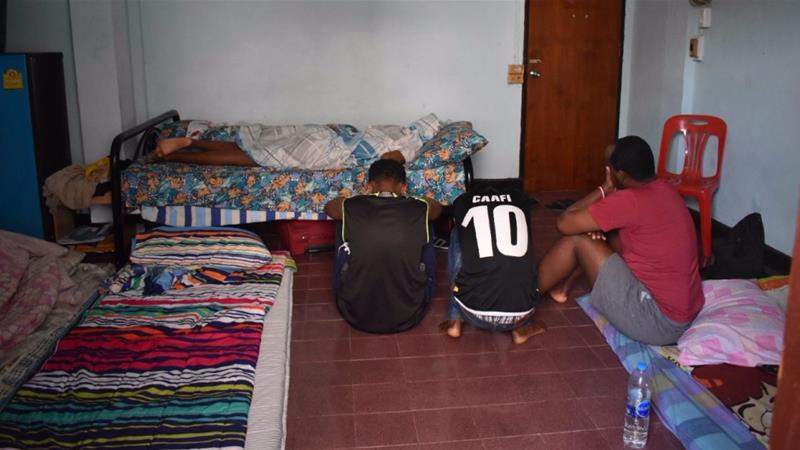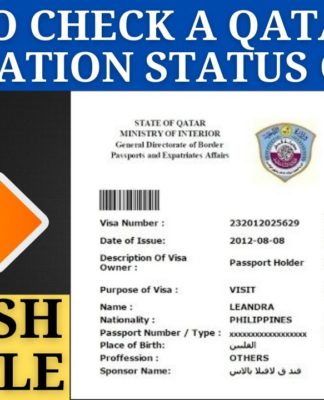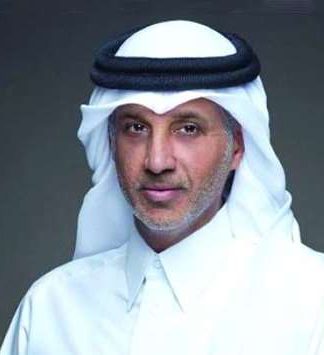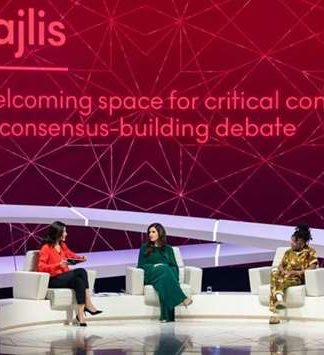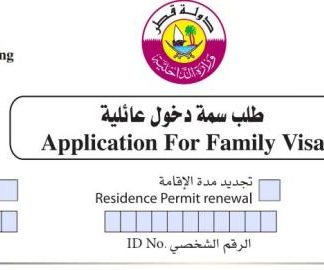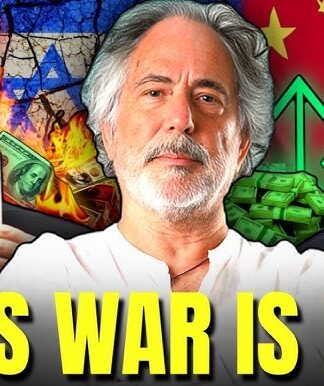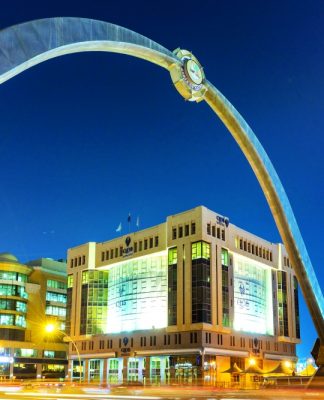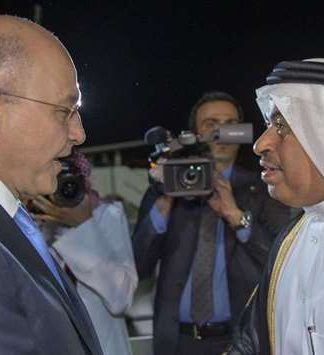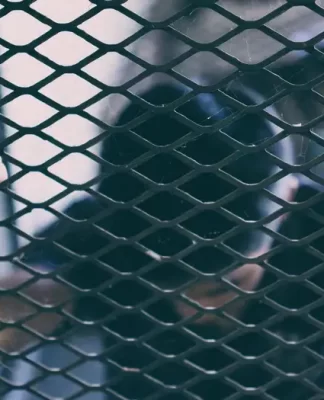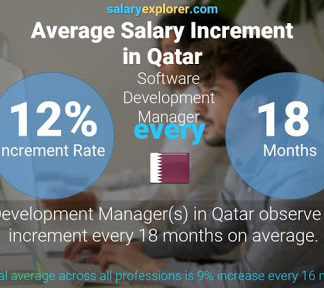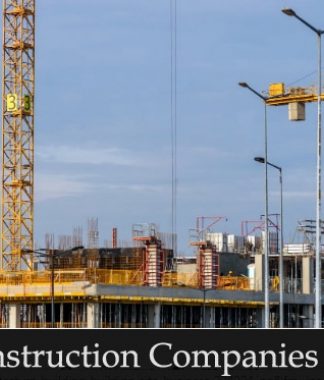by Alastair G.M

Bangkok, Thailand – “I’ve never experienced cold like this,” says RK, a 19-year-old Somali refugee, as he sits in a downtown Bangkok alley one December morning.
It is 20 degrees, and opposite is the Suan Phlu Immigration Detention Center, an office building concealing thousands of undocumented migrants.
It is a stone’s throw from Bangkok’s gregarious tourist district, and RK’s wife and nine-month-old daughter are being held inside.
“They kicked my door down and took my family when I was away,” RK says, referring to an immigration raid at his home three months earlier, as part of a crackdown on undocumented migrants.
The UN’s refugee agency, UNHCR, told Al Jazeera that Bangkok is home to a growing community of approximately 4,500 refugees and 2,000 asylum-seekers from more than 50 countries.
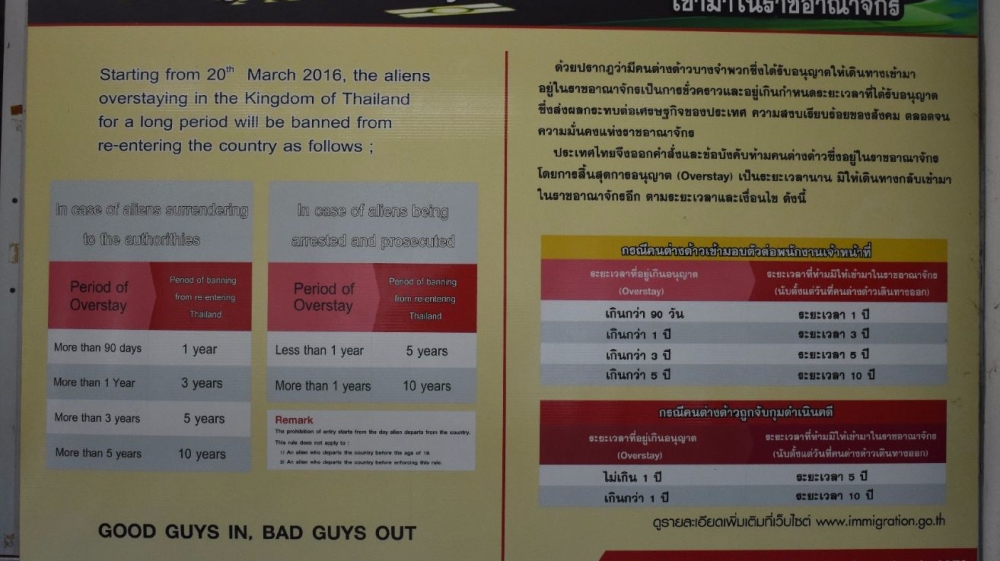 |
| ‘Good guys in, bad guys out.’ The ominous warning of the Thai government at the entrance of Suan Phlu Immigration Detention Center [Alastair G M/Al Jazeera] |
Regarded as “illegal aliens” under Thai law, RK’s wife and daughter face a period of indefinite detention. They will only be released by relocation to a third country, a lengthy process.
An undocumented migrant and former detainee himself, RK relies upon volunteers to relay messages of hope on his behalf.
An exact breakdown of the origins of refugee communities in Thailand is not available.
But compared with Europe, Thailand is in seen as being in easier reach and more hospitable among Pakistani, Somali, Iraqi, Palestinian and Syrian migrants and refugees – all of whom flock to the Asian country.
These were among the considerations that drew RK to the city. Three years earlier, when he was 16 years old, he fled Mogadishu, the Somali capital, after his father was killed in an al-Shabab car bomb attack.
Fearing for his life, RK’s family paid smugglers $2,000 to escort him on a flight to Kuala Lumpur, Malaysia, one of the few countries where Somali citizens do not require visas.
From there, he was transported 1,500km in the back of a truck on a three-day journey up the Malay Peninsula to Bangkok – home to UNHCR’s Regional Office for Southeast Asia, and a city from where he could apply for asylum.
“They told me it would be safe to live and work here until I got accepted into another country,” says RK, talking of his smugglers.
But misinformation and false hope are the currencies that sustain the smuggling industry, with the reality on the ground remaining far bleaker.
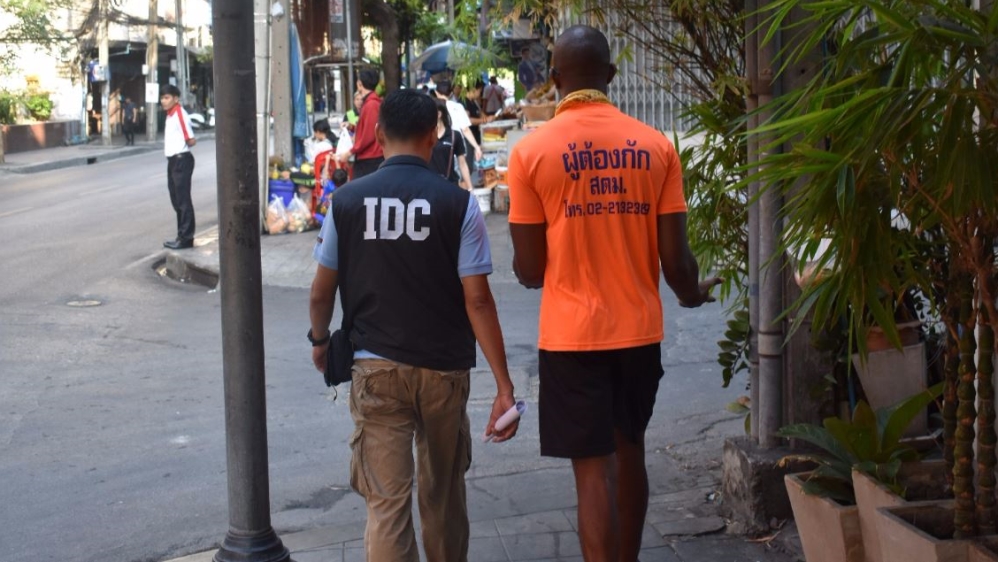 |
| A detention centre guard escorts a detainee to the bank. Detainees are charged to use phones and other essential services inside the centres [Alastair G M/Al Jazeera] |
Thailand is not party to the 1951 Refugee Convention, and Thailand’s Immigration Act does not distinguish between refugees, asylum seekers and illegal immigrants.
Consequently, all undocumented migrants remain at the mercy of immigration officials who regularly arrest and incarcerate anyone unable to produce valid visas.
According to Human Rights Watch (HRW), this approach is central to the Thai government’s immigration policy informed by the magnet effect; a belief that making conditions as inhospitable as possible for refugees and asylum seekers will deter future arrivals.
As a result, they face crippling government-imposed restrictions on access to healthcare and education. Most debilitating is the inability to earn money legally.
This consigns them to a life subsisting on irregular handouts from increasingly stretched refugee support networks.
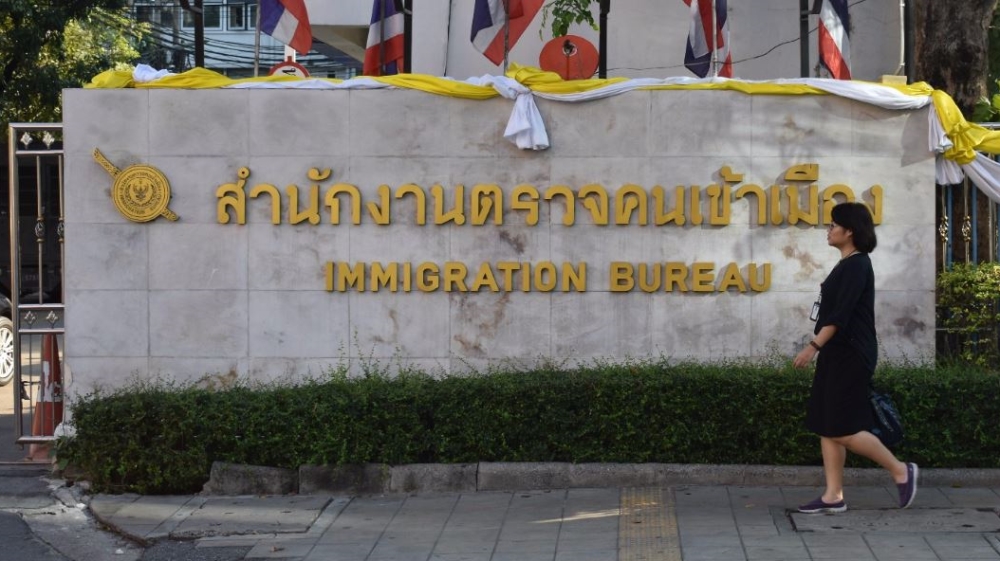 |
| There are around 2,000 asylum seekers in Bangkok from 50 countries [Alastair G M/Al Jazeera] |
UNHCR in Bangkok told Al Jazeera that due to financial shortfalls, the agency uses panels to assess the needs of refugees and “target assistance on the most vulnerable”.
Most are employed illegally and exploited.
“I received 1,500 thai baht ($47) for working 60 hours a week in a kitchen,” RK explains. “But my boss even took this away after three months because he was scared of getting caught.”
With the threat of arrest and detention constantly looming, avoiding unwanted attention from authorities is the foremost daily consideration.
With the vast majority of migrants confined to poorer Thai communities on the city’s outskirts, keeping a low profile is a must. Most spend long days confined to crowded and squalid apartments.
“Immigration [officials] bang on the doors almost every week shouting ‘Somalis come out!’. Sometimes they come inside and take people,” says 18-year-old Abdirahim, a member of a minority clan threatened with violence in his home city of Mogadishu. He arrived in Bangkok alone at the age 15.
He shares a single-room apartment with four other Somali men, none of whom are older than 20 and all are also members of minority clans in Somalia at risk of violence. The men estimate that there are seven other apartments in the building housing people of African and Middle Eastern origin living in similar circumstances.
 |
| Abdirahim, centre, does not leave this shared room for fear of arrest by authorities [Alastair G M/Al Jazeera] |
Despite having had their claims of asylum verified through extensive interviews and background checks as part of UNCHR’s Refugee Status Determination – with all carrying identity cards stating as much – Abdirahim and his roommates remain too frightened to leave their home unless absolutely essential.
“I’m scared to go out or I will be arrested and locked up again … I’m powerless to do anything to help myself so I just sleep,” he says.
Life inside immigration prisons offers a different kind of misery.
With access heavily restricted, accounts of abysmal conditions are known only from the testimonies of former detainees released on a now-defunct bail system that was operated at the discretion of immigration officials until mid-2016.
“I was in a cell with 120 men, only three times as big as this room,” Abdirahim explains, gesturing to his cramped apartment of 350 square feet. “Food was rice and soup twice a day. I would sleep on the concrete floor and only saw the sun every three days.”
Despite several attempts, representatives of the Thai Immigration Bureau for comment did not respond to Al Jazeera’s request for comment.
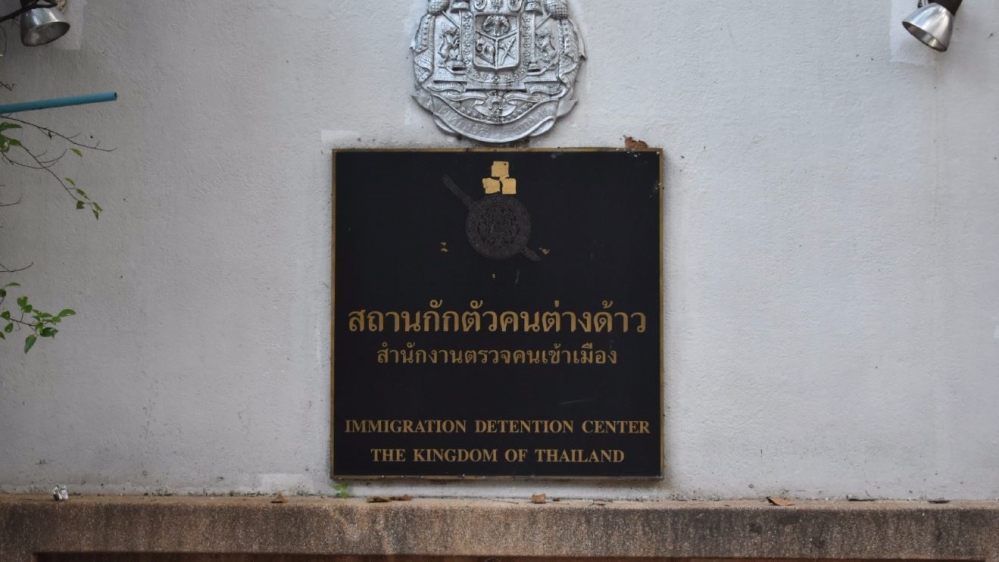 |
| Children have been held in detention centres, in contravention of international law [Alastair G M/Al Jazeera] |
Immigration detention of refugee and asylum-seeking children in Thailand violates the rights of children under international law.
Although he was a minor, Abdirahim spent two years in these conditions between the ages of 15 and 17 before being bailed out by a refugee support charity.
This practice of indefinitely detaining children among adults concerns rights groups. HRW says it violates Thailand’s obligations under international law and puts children at risk of sexual and physical abuse..
When Al Jazeera visited a detention centre, this reporter witnessed at least five children aged up to 10.
The Thai government has publicly affirmed its commitment to ending some immigration practices. In September 2016, Prime Minister Prayut Chan-o-cha pledged to end the detention of refugee children during a speech at the US-hosted Leaders’ Summit on the Global Refugee Crisis.
But UNHCR said it was unable to access figures for the exact number of minors in immigration prisons in Thailand and was unaware of a definitive end date for this practice.
In practice, the future for Bangkok’s refugees and asylum seekers remains precarious.
Phil Robertson, deputy director of HRW’s Asia division, told Al Jazeera that the Thai government has “dragged its feet for decades” on the issue of immigration reforms.
Some officials simply believe that “migrants and refugees do not deserve any better”, he said.
With returning home tantamount to a death sentence for most, receiving asylum in a third country remains perhaps the best hope.
“I wish I never came here,” says Abdirahim, standing on his balcony overlooking a bustling Bangkok street below. “I will go anywhere now. Anywhere where I will be safe and can start living my life.”
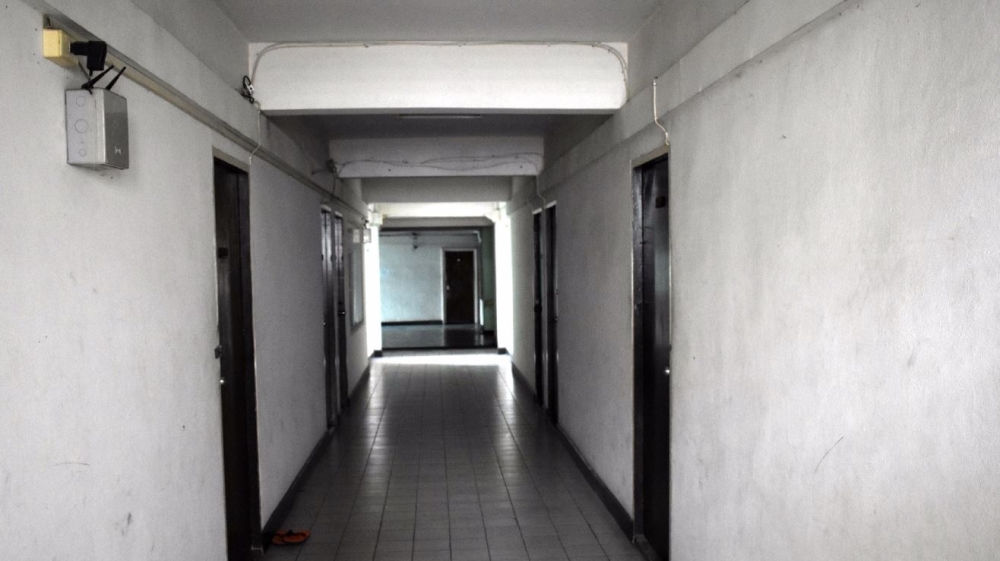 |
| This apartment block on the city’s outskirts is home to roughly 30 Somali refugees living five to a room [Alastair G M/Al Jazeera] |
SOURCE: AL JAZEERA NEWS













